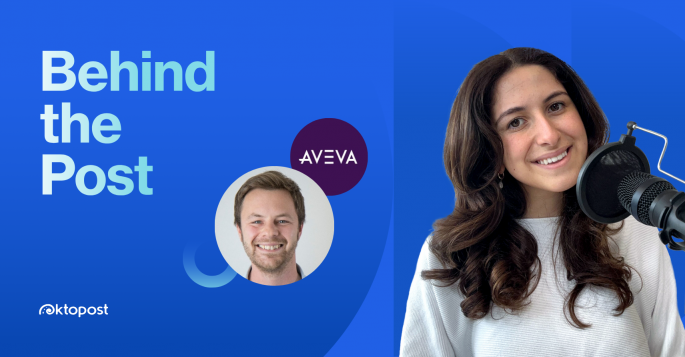
8 Tools social media managers use to grow their skills
Table of contents
Your company has a Facebook, LinkedIn, and Twitter channel to run, so they hired you as their social media manager…
WRONG!
The role of a social media manager is a lot more versatile and multi-faceted than you might think. Beyond writing engaging social posts, being a social media manager requires you to understand the company’s goals and achieve them through a well-planned strategy.
Whether you’re in this role to lay the groundwork for a successful career in marketing or you envision yourself leading the social media channels of a global company, you must have an eagerness to grow.
At the end of the day, “growing” is about furthering your skills, knowledge, and expertise in the marketing industry. It’s about adapting yourself to the latest marketing trends, technologies, and insights so that you always have fresh ideas to offer your audience.
As long as you hold onto this mindset, success can be yours! So to help you grow in your role, here are 8 tools for social media managers to use and embrace.
1. Oktopost
Sometimes it may feel like you’re blindly posting content to social media, but it doesn’t have to be that way. As a social media manager, you should be more strategic in the way you manage your time and activities. For example, each hour of the day should be dedicated to a specific task; mornings for publishing and curating content and afternoons for tracking your analytics.
The best tools for social media managers are those that make your job easier.
Using a social media management platform like Oktopost helps you keep a more organized workflow. Oktopost enables you to manage, measure, and amplify all of your social media activities from one place. You can schedule hundreds of posts and curate valuable industry-related content in minutes!
Designed for B2B marketing, Oktopost places a strong emphasis on tracking leads from social media, meaning that you can understand the true performance of every social post, campaign, and network.
2. Google Analytics
Learning is also about understanding data. You see, every social media activity should be measurable so that you can judge which one is driving the most impact on your company. That’s why Google Analytics is a must-have for any social media manager. Some may tell you, “No…Google Analytics is too advanced for your level,” but trust me, the earlier you get accustomed to it, the more proficient you’ll be in the future.
Among other things, Google Analytics is where you go to track the website traffic, conversions, and sales that your social media channels are driving. Being able to not only attribute these metrics to the channels and posts you own and manage but also to interpret this data and extrapolate insights from it, will ensure that your upper-management truly values your work.
If you’re new to Google Analytics (as most marketers are), this resource should guide your way.
Recommended for further reading
3. Zest
Now for a lighter, more user-friendly tool – Zest. In case this is your first time hearing about it, Zest is a dashboard in the form of a Google Chrome extension that exposes you to a vast sea of third-party content, including blog posts, infographics, whitepapers, videos, and more! Whether you want to stay on top of the latest industry news and updates or you want curate engaging content for your audience, Zest is your go-to source.
Unlike your standard content aggregation or content publishing platforms, Zest is unique in a sense that every piece of content you see is hand-picked by humans! That’s right, real people (bizarre to think about when everything today is being automated). This way you know that what you’re reading or sharing is of high-quality (or “zest-worthy”), therefore you’re not wasting time on stale content.
It’s extremely easy to install, not to mention customizable to your topics-of-interest, so check it out!
4. Canva
As we move away from plain-text updates and towards visually-captivating content, a social media manager needs to be a part-time designer. Thanks to Canva, you can fast-track your design skills in minutes! All you need is a knack for creativity and a good eye for visual language – no Photoshop or InDesign skills required.
From stunning layouts to brilliant backgrounds, and eye-catching fonts, Canva allows you to easily create the most beautiful visual content. And once your design is completed, you can export it as an image, GIF or movie file to incorporate it into your social media posts. What’s amazing about Canva is that you can build a custom brand kit, ensuring that all the fonts, colors, and logos you’re using are aligned with your company’s brand guidelines. For more information on how to master your next design, check out: Canva Design School.
5. Lumen5
You know those 60-second explainer videos from Buzzfeed and Mashable? Ever wanted to create one but didn’t know where to start?
Let me introduce you to Lumen5. Powered by artificial intelligence, Lumen5 is a fantastic video creation platform that transforms any blog post into a social video. All you need to do is copy and paste your blog URL, and Lumen5 will instantaneously create an informative video for you. More specifically, it independently collects specific text from your article and matches each scene with relevant videos, images, and music.
Similar to Canva, every video can be customized with branded watermarks, colors, fonts, and call-to-actions – so your content is always consistent. Want to create your next video? Create your next video here!
6. Rite-Tag
When posting on Twitter and Facebook it’s easy to gamble your way through hashtags (#) and hope for the best. However, this technique won’t win you any additional eyes. If you want to maximize the potential reach of your social content, you need Rite-Tag. This tool allows you to group, compare, and analyze the strengths of any hashtag.
Using a color grading chart, you can easily discover the most effective hashtags, while identifying ones that are overused. For example, I discovered that using #social media and #marketing as two separate hashtags gives you a much better chance of expanding your content’s reach.
7. Grammarly
There’s nothing worst than findings grammatical errors after your posts have already gone live (notice the grammar error I made). Even if you’re a native English speaker, some errors are natural to make. In this case, ‘worst’ and ‘worse’ sound alike when spoken but have a very different meaning and spelling.
Thanks to Grammarly, you can wave errors like this goodbye. By downloading it to your Chrome Tab, Grammarly will detect 250 types of errors including spelling, structure, punctuation, and plagiarism. Grammarly also shows you definitions and synonyms, so you can feel confident about every post you write!
8. Votigo
How to make your content more engaging? With Votigo’s social promotion platform, you can engage and reward your audiences by creating numerous interactive campaigns. Run contests, post video polls, and promote digital coupons across all of your social media channels. And the best part is that, for every campaign, you can track new leads and customers with custom landing pages and signup forms.
Votigo offers a great opportunity to help social media managers better navigate through the online sphere; first by finding ways to engage your audience in the best way possible and then pushing them to convert into a potential buyer.
It can be hard to find the right tools for social media managers—there are so many different aspects to the role itself. Between content creation, copywriting, video production, and social planning and scheduling, it’s a challenge to find the right tool for each task.
Hopefully, this list will be a great jumping off point to finding the tools you need to succeed!




